Saga Dawa Festival Tour
If you are interested in Mount Kailash tour with few days trekking, then this is your tour. Travel from Lhasa Mount Kailash and further to Guge Kingdom and ends the tour at Kyirong border town where you have option to continue travel to Kathmandu, Nepal.
Day 1: Arrive in Lhasa (3658 m)
Welcome to Lhasa! Lhasa is the capital city of Tibet. Lhasa means The Land of Gods. Transfer to your hotel and get settled. If you arrive early, you are free to go around Barkhor Street on your own.
Day 2: Lhasa Explore: Drepung Monastery, Sera Monastery, and Nechung Temple
Today, first we will visit Drepung Monastery, one of the three most famous monasteries in Lhasa. Drepung Monastery is located j18km west of Lhasa on Gambo Utse Mountain. This is one of the 6th Great Geluk tradition monasteries in Tibet. There were more than 8000 monks living and studying in monastic college in its peak era. The enormous monastic complex is consist of many prayer halls, rocking paintings, monks residences and temples. Just below the monastery of Drepung is the Nechung temple, the former home of the state oracle. Afterward, We will have lunch in a local restaurant and then drive 6km to visit Sera monastery. Sera Monastery is another one of the 6 Great Gelukpa monasteries in Tibet. Sera Monastery is not only one of the best monastic college but also organize Buddhist philosophical debating on daily bases except Sundays. The debating session starts around 3 pm and you are welcome to visit the debating courtyard to take a look at how Tibetan monks debating and learning. If you enjoy hiking, walk the hour-long circumambulation path around the monastery complex.

Day 3: Lhasa Explore: Potala Palace, Jokhang Temple, and Barkhor Street
In the morning, visit Potala Palace, the residence of Dalai Lama and the greatest monumental structure in all of Tibet. This majestic construction begins in the 7th century. Afterward, visit the Jokhang Temple, which is located in Barkhor square in the old quarter of Lhasa. Jokhang Temple is the holiest place in Tibet. After exit Jokhang, you can follow local pilgrims in the Barkhor street. The Barkhor is a famous shopping street filled with goods and souvenirs from Tibet, Nepal, and India. Pilgrims from all over Tibet visit the Barkhor to pray in front of the Jokhang. Afterward, visit Ramoche, a small monastery located in the city center.

Day 4: Lhasa – Yamdrok Lake (4442 m) – Samding monastery – Karo La Glacier – Gyantse (3900m) , 280km, 6 hours
Beginning your adventure in the Himalayas, drive to Gyantse. Along the way drive through the Brahmaputra River which goes to India and crosses over the Kamba la pass (4794m) and the Karo la passes (5010m), which boast spectacular views of Yurlung Valley in the east and snow mountain Nyenchen Kangsang in the west. After Kamba la, arrive at Yamdrok Yumtso Lake, a holy turquoise-colored lake with stunning scenery. If time allows, visit the Samding monastery located on the lakeshore. and only female reincarnation takes control of the monastery. Before reach to Gyantse, you will also stop at Simila pass which over 3800m. You can follow the prayer flags to enjoy a stunning view of the lake in the deep valley. Stay the night in Gyantse.
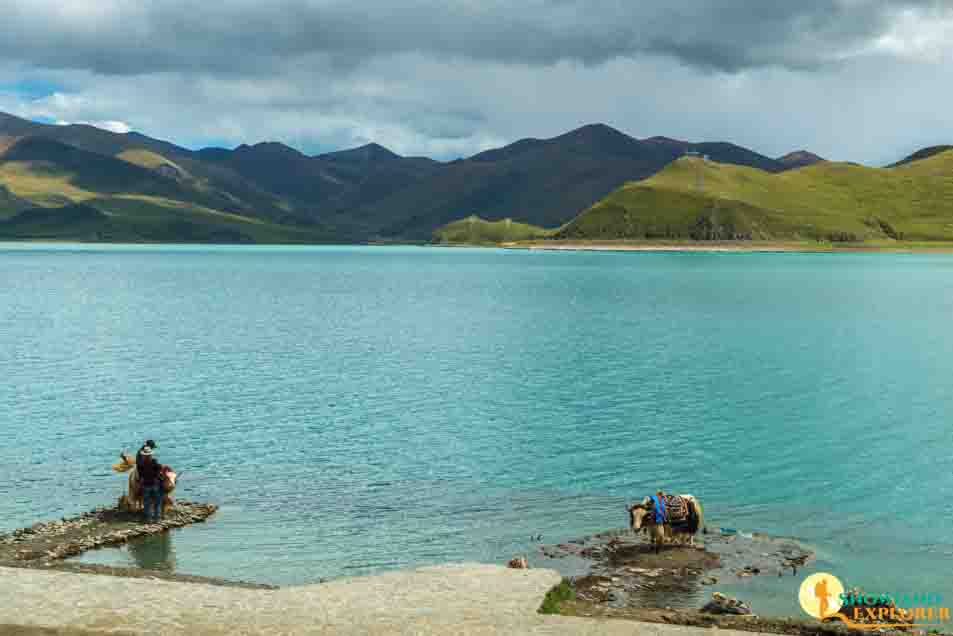
Day 5: Gyantse – Shalu Monastery – Shigatse (3836 m), 100km, 2 hours
In the morning, visit Gyantse, Gyantse is a midsized town in the southwest of Lhasa. When you enter the town, the first landmark that will be seen is Gyantse Dzong or Gyantse Castle which once used as the residence of Gyantse Kings. The famous Pelkor Chode and Kumbum Stupa are at the north end of the town. The Pelkor Choede once was the largest non-sectoring Buddhism learning center, but today only two main temples are left. Next to the main temple is the Kumbum Stupa, this Mandala (Buddhism cosmos) shaped stupa is the largest of it’s kind in Tibet. There are many chapels which you can visit each of these chapels walk clock-wise from one storey to another. Once you made up to the top storey, Gyantse Old town and Dzong castle can be seen not far distance. Afterward, followed by a two-hour drive to Shigatse. Along the way, we will make a detour to visit Shalu Monastery. Shalu monastery is a small monastery about 22 km south of Shigatse City and 78km west of Gyantse. Founded in 1003 by Jetsun Sherab Jungnay, an eleventh-century Tibetan abbot and scholar. Shalu became the first among the major monasteries and learning centers during Tibet’s great revival of Buddhism and an important center of the Sakya tradition. Then we drive to Shigatse, where we pay a visit to the giant Buddha in the famous Tashilunpo monastery. Tashilhunpo Monastery is the seat of Panchen Lamas, the second-highest rank lama after Dalai Lama. There is an old village next to the monastery where you can see authentic local shops. We will spend the night in Shigatse.

Day 6: Shigatse – Langtso Lake – Saga (4640m) 480km, 9 hours
Drive up to high mountain passes with a great view of the Himalayas. You’ll be driving through the countryside and grasslands, where you can see small lakes and nomads camping with their yaks and sheep. Drive from Shigatse towards Ssaga about 180km, you will reach a beautiful alpine lake called the Langtso at an elevation of 4300m. There are yaks and sheep scattering at the lakeside. This is a great place to have a short break and stretch your legs for this long driving journey. In the late afternoon, cross over the Brahmaputra River to reach Saga in the late afternoon. Saga is a typical nomadic town as well as truck stop town between Ngari Prefecture and Lhasa. Spend the night in Saga.

Day 7: Saga – Paryang (4700 m) – Darchen (4575m) 490km, 8 hours
Today, we continue drive west through a wide valley along a scenic river and look out on the grazing lands of yaks and sheep. These areas we are driving are some of the most remote areas of Tibet. you can see sand dunes, rocky mountains, and snow-capped peaks. Depending on the season, nomads and other mobile shopkeepers will be attired in beautiful traditional costumes. Join them for a cup of hot tea in their home. In the late afternoon you will catch your first sight of Holy Lake Manasarovar, Mount Nemo Neni and Mount Kailash. Prepare for the Mt. Kailash Kora once you arrive Darchen. Spend the night at Darchen where you can enjoy a close-up view of Kailash at any point in this one-street town.
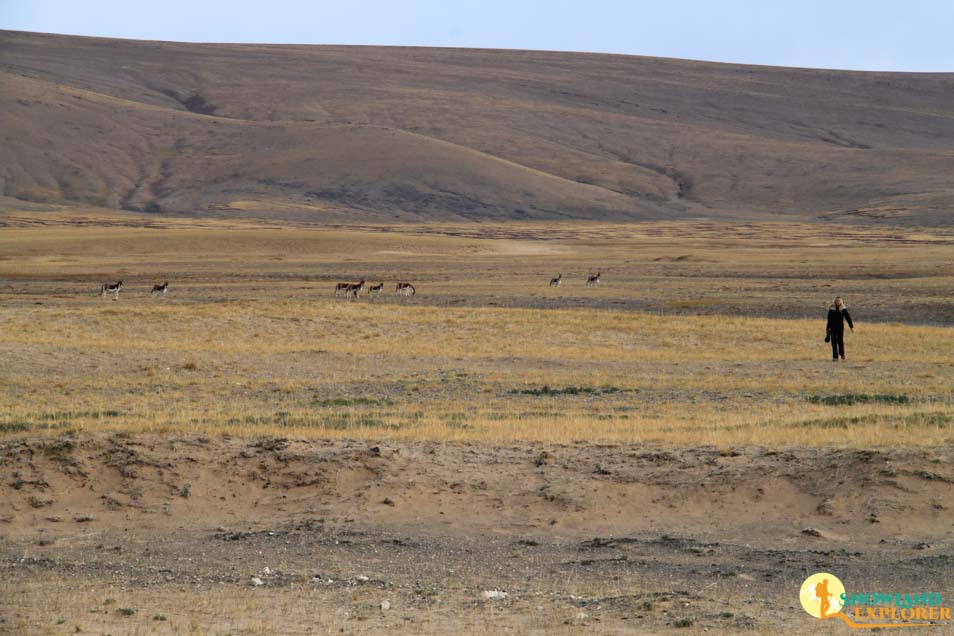
Day 8: Darchen – Zhada – Guge Kingdom – Tsaparang (3630m) 250km, 5 hours
Continue drive 250km further west to Guge Kingdom. On the way, we will first drive through colorful mountains and then into the world of white clay land formations. Once we arrive in the Guge Kingdom, we will have the whole afternoon to explore the ruins of this ancient kingdom dated back to the 10th century. There are four main temples in the lower reaches of the castle, where you can see ancient wall paintings and Buddha’ statues display in the dark halls. Among these temples, the Whitel Palace and Red Palace are the most important and well preserved ones. Some of them are of the earliest examples of Tantric Buddhist art. Above these temples, you can find the citadel of the kings. This castle frustruction is carved into the clay muntain, so you can explore these cave rooms when you hiking up to the top of the mountain. When you reach the top, you can enjoy spectacular view of this vast clay valley and mountains. We will spend the night either in Tsaparang Village or Tholing Monastery.
Day 9: Tsaparang – Toling Monastery – Tirthapuri – Darchen (4575m) 270km, 5.5 hours
In the morning we will drive about 25km to Toling if we stay in Tsaparang. Here we will visit Toling Monastery which consists of two main temples and several other ruins of ancient stupas. Tholing Monastery which is built by Great Tibetan translator Rinchen Zangpo in the beginning of the 10th century. These Buddhist temples became the religious center of the Guge Kingdom. Once you are there, do not miss a small back door which will lead you to the riverside where you can see the ancient Toling Monastery and stupa wall.

Afterward, we drive back towards Darchen with a detour to Tirthapuri. Tirthapuri is said to be the gate of Mount Kailash and many pilgrims visit Tirthapuri first and then make the Kailash Kora, so our tour itinerary is planed according to the this practice. Tirthapuri, located on the Sutlej River just above the Tirthaburi hotspring. You can take a break here and deep your feed inside the natural hotspring. Tirthapuri is famous for being the meditation site of Padmasambhava and his consort and student Yeshi Tsogyel. It was a pure meditation cave site 10 years ago, but later two Buddhist temples were built there. If you make a circumambulation around the monastery, you will see some other mediation caves and stupas scattering on the colorful mountain slope. Then we drive back to Darchen and prepare for the trek. Stay in Darchen.

Day 10: Saga Dawa Festival in Tarboche [Full Moon]
Today is the holiest day in Tibetan callendar. We walk about 40-50 minutes to get to the ground of Saga Dawa Festival – the biggest festival in Ngari area. Thousands of local Tibetans all over Ngari region came to attend this festival with the best clothese they have. . Many rituals like Buddhism, Bon, and Hinduism will be taking place around Tarboche. The Saga Dawa Festival honors the life of Buddha Shakyamuni, and the main point of the festival is to pray for the long life of all the gurus, for the spreading of teachings of Buddha, world peace, and for the happiness of all the sentient beings. This festival also offers a great opportunity for photograph local Tibetan nomads. Spend the night in a guest house in Darchen.
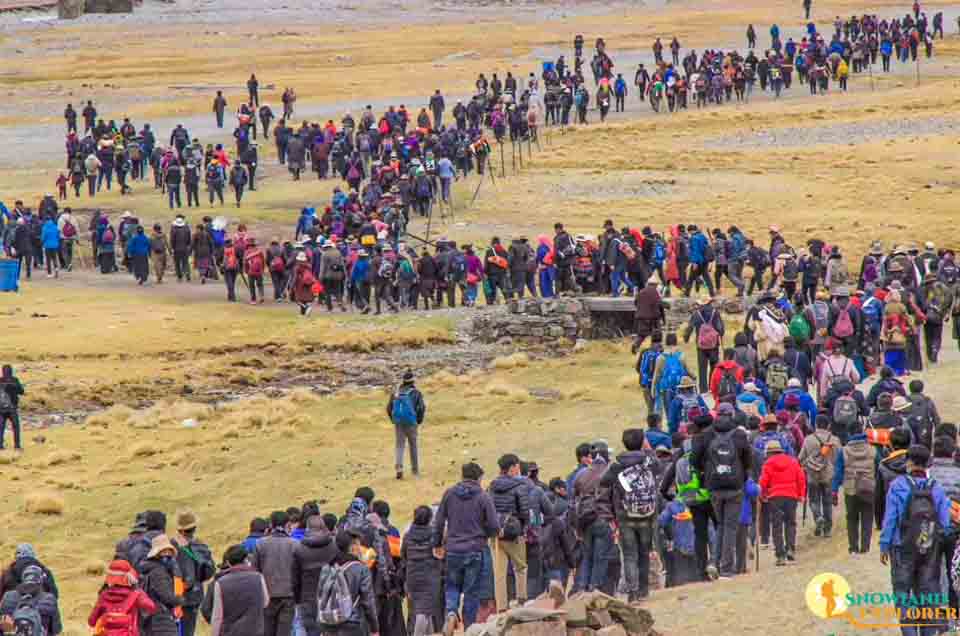
Day 11: 1st Day of the Mt. Kailash kora, trekking distance 19km and 6 -7 hours.
Walk along beautiful rocky cliffs, take deep breaths of fresh air. From time to time, the face of Mt. Kailash will appear. The trail passes the stone piled pass with colorful prayer flags, famous Tarpoche Flagpole, sky burial site and then enters Lha Chu valley. at the gate of this rocky canyon, a small monastery called Chugu Monastery with meditation cave of Tibetan Great Yogi Melaripa is on the left side of this canyon across the river. If you are a good trekker and interested in meditation, you can follow the small trail leading to this monastery on the left side of the river while others may continually go on the main trail. Pay a visit to this monastery takes an extra one hour. Afterward, you can join the main trail across the bridge below the monastery. Both sides of this canyon are high steep rocky mountains which are representing Bodhisattvas. Fox example, the three high rocky mountains at the left before reach Dirapuk Monastery represent “Rigsum Gonpo” in Tibetan or Three Bodhisattvas ( Manjushri, Avalokiteshvara and Vajrapani). After half hour of walking, you will reach sacred Dira Puk monastery which is located at an elevation of 5,000 meters by mid-afternoon. Here you can see the North Face of Mount Kailash. This site is also considered as a birthplace of Shiva – one of the primary forms of God in Hinduism. Spend the night in the monastery guest house.

Day 12: 2nd day of the Mt. Kailash kora – Dolma la pass (5650 m) – Zuthal Puk (4815m), Trekking distance 12km and 7 hours.
This place is the closest place to view Mt. Kailash in the entire kora. It’s right behind the guesthouses, so enjoy this last time close-up view of this holy mountain, then we start the day. Hike across a valley up to the Dolma-La Pass. The trail is much more dramatic today as you are ascending from 5050m to 5650m above sea level. Though these numbers are not big difference but given the altitude in this area, it is the most difficult part of the trek. When you reach the top, make an offering, take a break (or meditate), and leave behind all your problems and worries. Let the prayer flags at the mountain pass bring positive energy to you and your families. Afterward, begin descending. A mirror–like turquoise lake will appear in front of you in the middle of black rocky mountains, which said to be water offering for the holy mountain. By the late afternoon arrive at Zuthal Puk , the cave of miracles where Milerepa once stayed.
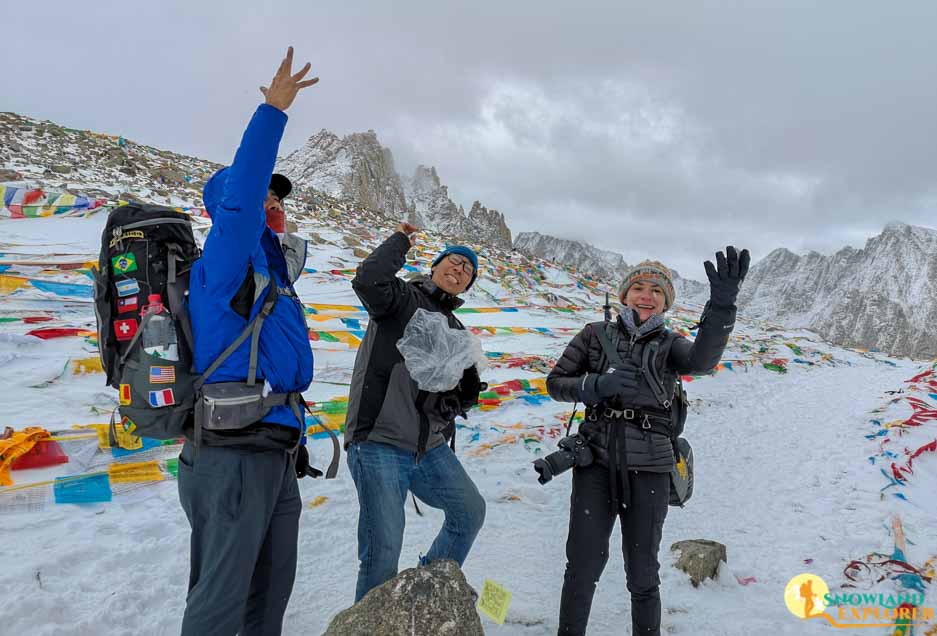
Day 13: 3rd day of the Mt. Kailash kora, view of Mt. Nemo Nani and drive to lake Manasarovar, trekking distance 10km, 4 hours
Start the day by following one of the clearest rivers you have ever seen. The trail is flat and much more greener. At the end of the valley before turning right, a stunning view of snow mountain Nemo Nani (altitude 7728m) will appear in your eyes. After finishing your circuit of Mt. Kailash, your car will pick you up and take you to Lake Manasarovar – one of the highest freshwater lake in the world. This turquoise-colored lake is full of fish and swans. Holy Mt. Kailash, Mt. Gurula-Mandala, and Lake Rashekshi surround Manasarovar. The region is considered rich in gold and other minerals, hot springs and hundreds of wild living creatures. Then visit Rakshas Tal lake and Chiu Monastery, a small monastery located upper on a hillside. You can dip into a hotspring there. If your group stays until sunrise, a walk to the mountain slope to see a full view of the lake is recommended.Optional: Manasarovar lake bus kora /depend on time and bus availability.
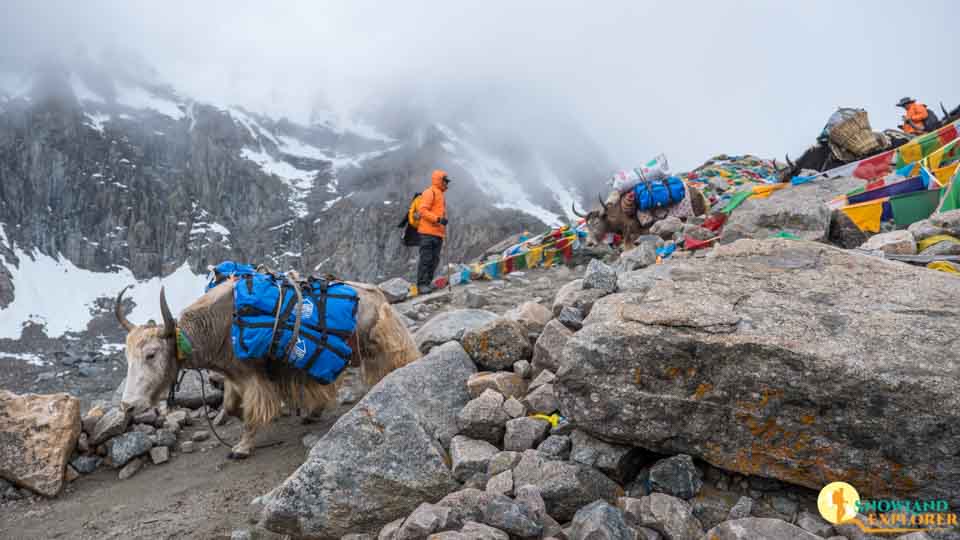
Day 14: Holy Lake Manasarovar – Paryang – Saga, 450km, 8 hours
Begin the journey back to Lhasa. Enjoy a beautiful view of Himalaya ranges. Most travelers usually take this long driving road back as rest time after 3 days of incredible trek. But this zig-zag scenic drive always bring some surprises such as suddenly appear rain bowls in front of your vehicle, flock of yaks or sheep may stop your bus which gives you a chance to close-up look at this animals , a wild animal running cross the road, a beautiful lake or snowy, sunrise or sunset.etc. make your journey alive.
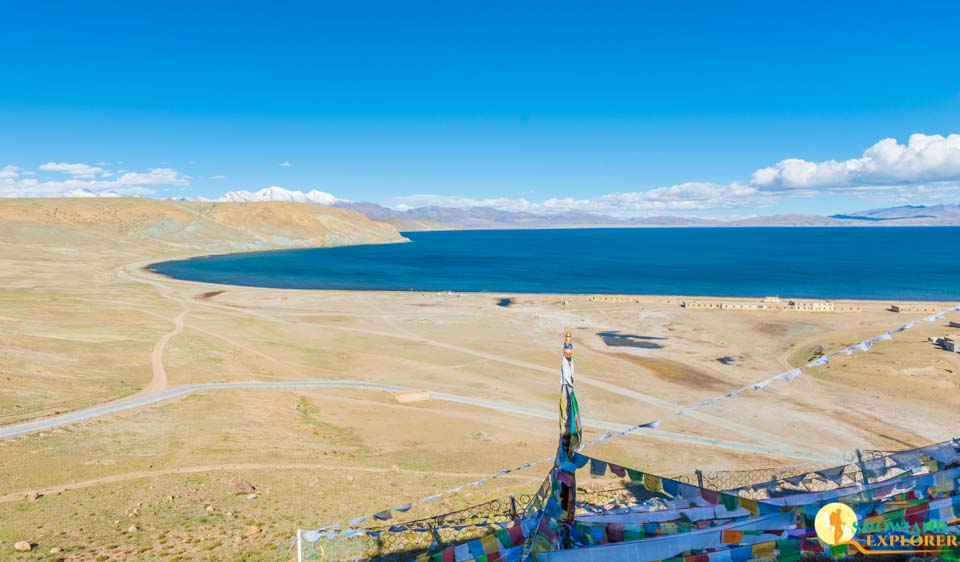
Day 15: Saga – Kyirong (Nepal border), 2800m, 180km, 4 hours
Continually drive in the Himalayas. If weather permits you will have a great view of Mt. Shishapangma and other snow peaks. After ascending to Gongtang La pass which is the last highest point of this trip with an elevation of 5300m / 17400ft, the zig-zag road will lead us down to the valley. The attitude is getting lower dramatically as you descend to the valley, and the geography changes from desert-like grassland into the greenish forest. You start to feel the gentle air which with full of oxygen. Right before reaching Kyirong town, we will stop at a waterfall which falls from top of a rocky mountain. The water said to be blessed by Guru Rinpoche. Once you get to the newly built border town of Kyirong, you can fully rest in a restaurant, or wander around the town. There is a Nepali style temple called Pakba Monastery which hosts about 30 nuns. Overnight in a guesthouse in Kyirong.

Day 16: Kyirong – Rasuwa Gadi (Cross border) / or back to Shigatse, 500km, 10 hours
Drive 23km towards the border between China and Nepal. The customs opens at 10 am and closes by 17:30 pm. It may take around 1-2 hours to cross the border and go through customs formalities. After crossing the bridge, you need to go through Nepali customs. Finally, you will get to the Nepal border town of Rasuwa Gadhi. Our Tibetan guide will help you to go through border formalities on the Chinese side of the border. On the way to Kathmandu, you will see Langtang National Park, snow peaks, farm terrains and Rasuwa ethic group of Nepal. You will arrive in Kathmandu in the evening. It takes about 8-9 hours to reach Kathmandu. Note: there are unpaved parts of the road.Those who return back to Lhasa, continue to drive to Shigatse via Old Tingri. This is another long driving journey. Due to the traffic speed limit, your vehicle will stop several minutes from time to time, so you will have a chance to stretch your legs or walk around. Along the way, you will again see Peikutso lake and some of the World’s highest mountains including Mt. Shishapangma, Mt. Cho-Oyu, etc. Arrive in Shigatse in the evening.
Day 17: Shigatse – Yundrongling Monastery – Lhasa, 250km, 5 hours
Today, we continue to drive on the friendship highway. After 80km we will make a detour to visit Yundrunling Monastery, this monastery is the biggest Bonpo monastery in Tibet and it was once the second most influential monastery in Tibet. This is the only monastery you need to walk counter clock-wise in this trip. The main Chapels are Assembly Hall, Protector Hall. Note, female travelers are not allowed to go inside the Protector Hall. Finally, we will make our way back to Lhasa.
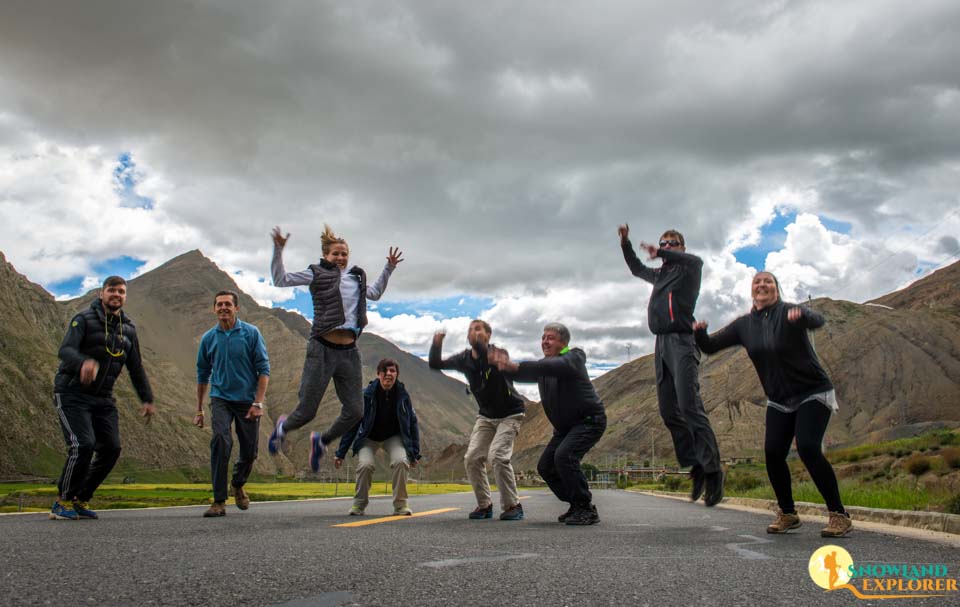
Day 18: Depart from Lhasa
Say goodbye to Tibet!
-
DepartureLhasa
-
IncludedAll necessary Tibet Travel permitsLhasa airport/railway station pick up and drop offTibetan English speaking guidePrivate vehicle with a Tibetan driver en route in TibetAccommodation at 3 star hotels in Lhasa, Gyantse, and Shigatse (double shared rooms)Accommodation at budget hotels and guest houses in the rest of the placesAll breakfasts except of Mt. Kailash koraAll entrance tickets listed above itineraryDriver and guide's food and accommodation
-
Not IncludedPlane/train ticketsFood (lunch and dinner; breakfasts at Mt. Kailash kora)Yaks/porters/horses for the Kailash kora (optional)Manasarovar lake bus kora (optional)Transfer from Tibet-Nepal border to Kathmandu (for those who exit Tibet to Nepal)
-
Maps
Similar Tours
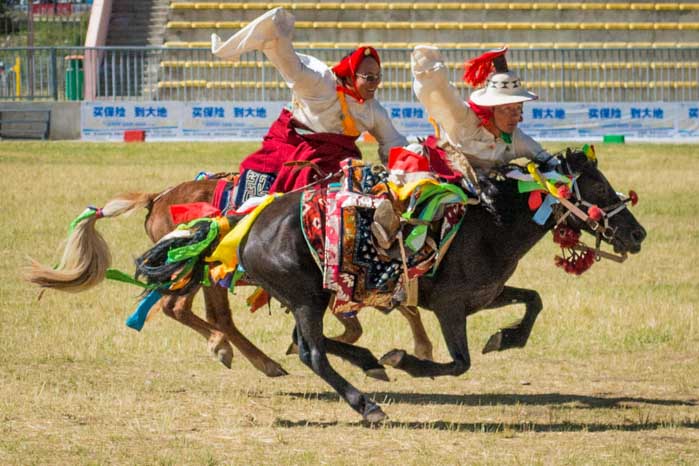
Yushu Horse Racing Festival
Snow Mountain, Tibetan Culture, Horse Racing Festival
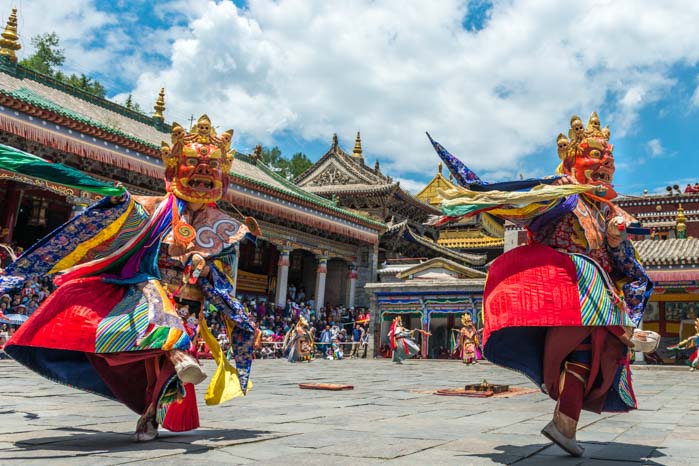
Amdo Monlam Festival Tour
Tibetan Culture, Festival and Buddhist Rituals
.jpg)
-2.jpg)


.jpg)
.jpg)
.jpg)
.jpg)
.jpg)
.jpg)